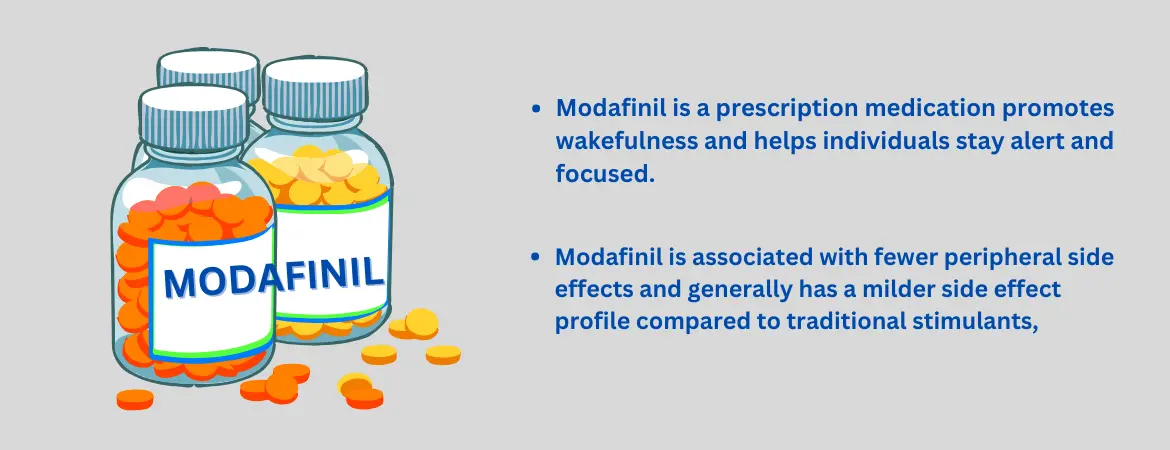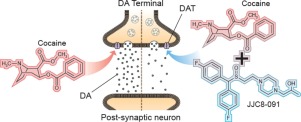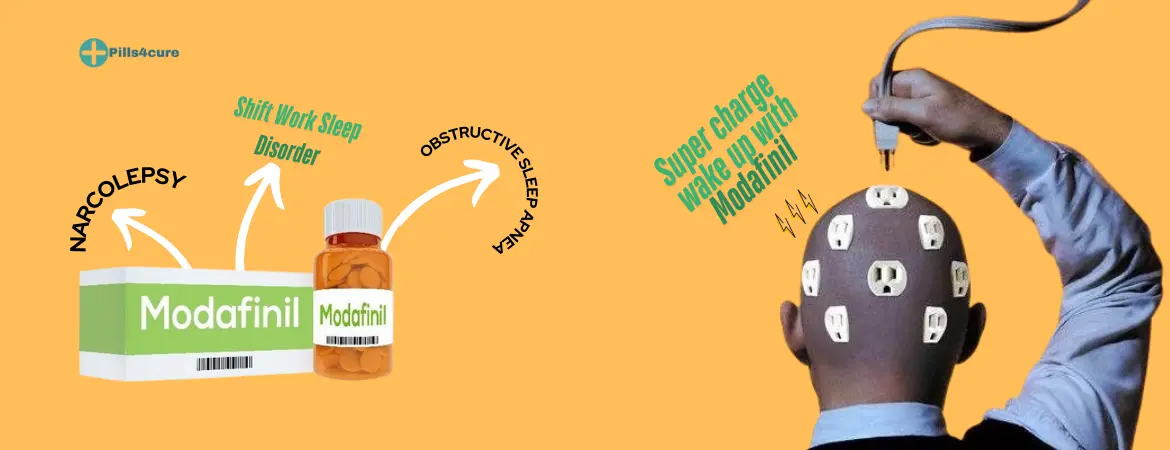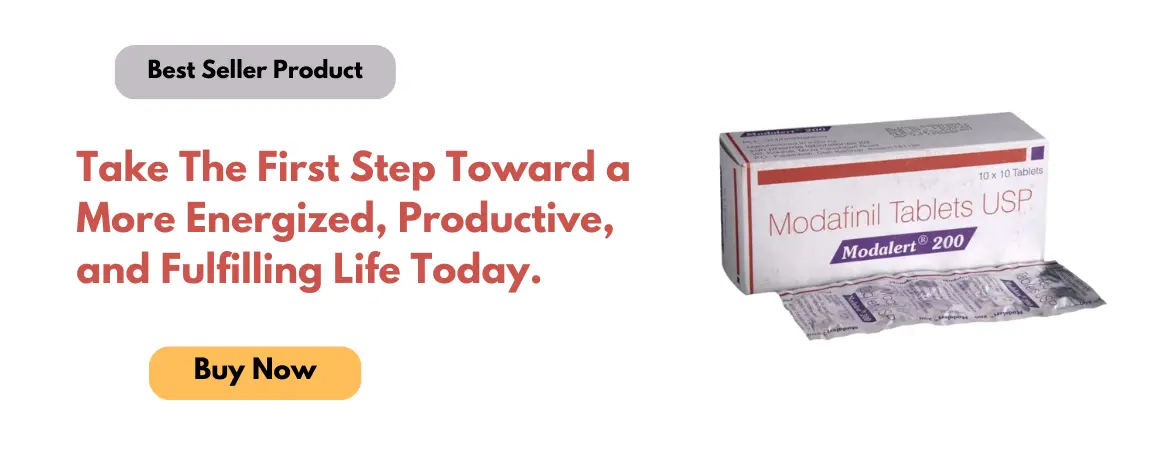Sorry, nothing in cart.
Modafinil: A Wakefulness-Promoting Agent for Enhanced Focus and Alertness
- By admin
- |
- General Blog
- |
In an era where productivity and mental performance are highly valued, Modafinil has emerged as a game-changer for enhancing focus, wakefulness, and cognitive function. As an active ingredient in prescription medications, Modafinil is used to treat sleep disorders such as narcolepsy, obstructive sleep apnea/hypopnea syndrome (OSAHS), and shift work disorder. While Modafinil does not cure these conditions, it effectively manages symptoms as long as it is taken consistently.
What is Modafinil?
Modafinil is a wakefulness-promoting agent classified as a eugeroic. Approved by the U.S. Food and Drug Administration (FDA) in 1998 under the brand name Provigil, it is primarily used to treat narcolepsy, a condition marked by excessive daytime sleepiness. Over time, its applications have expanded to include other sleep-related disorders, such as obstructive sleep apnea (OSA) and shift work sleep disorder (SWSD).
Unlike traditional stimulants like amphetamines, Modafinil does not produce significant euphoria or a ‘high,’ reducing its potential for abuse. Its unique mechanism targets specific neurotransmitters in the brain, promoting alertness and cognitive enhancement without the jittery side effects commonly linked to stimulants.

How Does Modafinil Work?
Modafinil is a wakefulness-promoting agent primarily used to treat narcolepsy, shift work sleep disorder, and obstructive sleep apnea. Its exact mechanism of action is not fully understood, but it involves multiple neurochemical systems and brain regions. Here’s a structured overview of its known and proposed effects:
1. Dopamine Reuptake Inhibition
Primary Mechanism: Modafinil binds to the dopamine transporter (DAT), inhibiting dopamine reuptake, which increases extracellular dopamine levels in key brain regions like the striatum and prefrontal cortex. This enhances arousal and attention without the pronounced euphoric effects of traditional stimulants (e.g., amphetamines), likely due to its lower affinity for DAT.
Implications: Elevated dopamine levels may improve focus and alertness, though its weaker DAT binding contributes to a lower risk of abuse compared to other stimulants.
2. Activation of Hypothalamic Pathways
Histaminergic System: Modafinil stimulates the tuberomammillary nucleus (TMN) in the hypothalamus, increasing histamine release. Histamine is a critical neurotransmitter for maintaining cortical arousal.
Orexin (Hypocretin) System: While not a direct orexin agonist, modafinil may enhance activity in orexin-producing neurons, which are often deficient in narcolepsy. This indirect stimulation promotes sustained wakefulness.
3. Modulation of Other Neurotransmitters
Norepinephrine: Modafinil may increase norepinephrine levels in the prefrontal cortex, possibly through indirect mechanisms (e.g., disinhibition of noradrenergic neurons), enhancing alertness.
Glutamate and GABA: Some evidence suggests modafinil increases glutamatergic (excitatory) signaling while reducing GABAergic (inhibitory) tone, promoting neural activation.
Serotonin and Adenosine: Unlike caffeine, modafinil does not block adenosine receptors, and its effects on serotonin are minimal and not well-defined.
4. Neurochemical Selectivity
Targeted Action: Modafinil’s effects are more selective to brain regions regulating wakefulness (e.g., hypothalamus, thalamus) rather than global stimulation. This selectivity may explain its reduced side effects (e.g., minimal cardiovascular impact).
5. Clinical and Cognitive Effects
Wakefulness: Promotes alertness without the hyperarousal or crash associated with amphetamines.
Cognitive Enhancement: Users report improved executive function, memory, and motivation, though these effects are more pronounced in sleep-deprived individuals.

By targeting these systems, Modafinil promotes wakefulness and cognitive enhancement without the overstimulation or crash associated with traditional stimulants.
Approved Uses of Modafinil
Modafinil is FDA-approved for the following conditions:
- Narcolepsy: A chronic sleep disorder characterized by excessive daytime sleepiness and sudden episodes of sleep. Modafinil helps individuals with narcolepsy stay awake and alert during the day.
- Obstructive Sleep Apnea (OSA): A condition where breathing repeatedly stops and starts during sleep, leading to poor sleep quality and daytime fatigue. Modafinil is often prescribed alongside continuous positive airway pressure (CPAP) therapy to alleviate residual sleepiness.
- Shift Work Sleep Disorder (SWSD): A condition affecting individuals who work non-traditional hours, such as night shifts. Modafinil helps these workers stay awake and alert during their shifts and improves their ability to sleep during the day.
Off-Label Uses of Modafinil
While Modafinil is approved for specific sleep disorders, its off-label use has grown significantly. Some of the most common off-label uses include:
- Cognitive Enhancement: Modafinil is widely used by students, professionals, and creatives to improve focus, memory, and productivity. Studies have shown that it can enhance executive function, problem-solving, and decision-making.
- Fatigue Management: Individuals with chronic fatigue syndrome or those recovering from illness often use Modafinil to combat persistent tiredness and improve quality of life.
- Jet Lag: Frequent travellers use Modafinil to reset their sleep-wake cycle and reduce the effects of jet lag.
- ADHD (Attention-Deficit/Hyperactivity Disorder): Although not FDA-approved for this purpose, some studies suggest that Modafinil may improve attention and impulse control in individuals with ADHD.
Benefits of Modafinil
- Enhanced Wakefulness: Modafinil is highly effective at promoting alertness, making it a valuable tool for individuals with sleep disorders or those working long hours.
- Improved Cognitive Function: Users often report better focus, memory, and problem-solving abilities. Research has shown that Modafinil can enhance working memory and cognitive flexibility.
- Mood Elevation: By increasing dopamine levels, Modafinil can improve motivation and reduce feelings of fatigue.
- Minimal Side Effects: Compared to traditional stimulants, Modafinil is generally well-tolerated, with fewer risks of overstimulation or dependency.
- Long-Lasting Effects: A single dose of Modafinil can provide wakefulness and cognitive benefits for up to 12-15 hours, making it ideal for long workdays or study sessions.
Modafinil Mechanism of Action
Modafinil is classified as a Schedule IV controlled substance by the U.S. Drug Enforcement Administration (DEA) due to its potential for abuse and dependence. The mechanism of action of Modafinil is not fully understood, but research indicates it influences multiple neurotransmitter systems in the brain. Modafinil primarily affects dopamine levels by inhibiting dopamine transporters (DAT), leading to increased extracellular dopamine. It also stimulates the orexin (hypocretin) system, which regulates arousal and wakefulness, while enhancing histamine and norepinephrine activity. Additionally, Modafinil modulates glutamate and GABA, reducing inhibitory signals and increasing cognitive alertness.
Potential Side Effects and Risks
While Modafinil is considered safe for most people, it is not without risks. Common side effects include:
- Headaches
- Nausea
- Insomnia (if taken too late in the day)
- Anxiety or nervousness
- Dry mouth
- Dizziness
In rare cases, Modafinil can cause more serious side effects, such as:
- Skin rashes or allergic reactions
- Increased heart rate or blood pressure
- Psychiatric symptoms (e.g., hallucinations, depression)
- Dependency or withdrawal symptoms (though rare)
It’s important to consult a healthcare provider before using Modafinil, especially if you have a history of heart conditions or mental health disorders or are taking other medications.
Modafinil vs. Other Stimulants
Modafinil is often compared to traditional stimulants like Adderall and Ritalin. Here’s how it stacks up:
- Mechanism of Action: Unlike amphetamines, which flood the brain with dopamine, Modafinil works more subtly by inhibiting dopamine reuptake. This makes it less likely to cause euphoria or addiction.
- Side Effects: Modafinil has fewer side effects compared to traditional stimulants, which can cause jitteriness, crashes, and appetite suppression.
- Duration: Modafinil’s effects last longer (12-15 hours) compared to Adderall (4-6 hours).
- Addiction Potential: Modafinil has a lower risk of dependency, making it a safer option for long-term use.
Ethical Considerations
The use of Modafinil for cognitive enhancement raises important ethical questions. Is it fair for individuals to use performance-enhancing drugs to gain a competitive edge? Should Modafinil be accessible to everyone, or should its use be restricted to medical purposes? These questions highlight the need for ongoing dialogue about the role of nootropics in society.
How to Use Modafinil Safely
If you’re considering using Modafinil, here are some tips to ensure safe and effective use:
- Consult a Doctor: Always seek medical advice before starting Modafinil, especially if you have underlying health conditions.
- Start with a Low Dose: Begin with the lowest effective dose (typically 100 mg) to minimize side effects.
- Take It Early: To avoid insomnia, take Modafinil early in the day.
- Stay Hydrated: Modafinil can cause dry mouth, so drink plenty of water.
- Avoid Alcohol: Combining Modafinil with alcohol can increase the risk of side effects.
- Monitor Your Health: Regularly check in with your doctor to ensure Modafinil is working safely for you.
The Future of Modafinil
As research into Modafinil continues, its potential applications may expand. Scientists are exploring its use in treating conditions like depression, bipolar disorder, and even cognitive decline in ageing populations. However, more studies are needed to understand its long-term effects and safety profile fully.
Conclusion
Modafinil is a powerful tool for enhancing wakefulness and cognitive performance, offering benefits for individuals with sleep disorders and those seeking to optimize their mental abilities. However, like any medication, it comes with risks and should be used responsibly under medical supervision. By understanding how Modafinil works, its benefits, and its limitations, you can make an informed decision about whether it’s the right solution for your needs.

